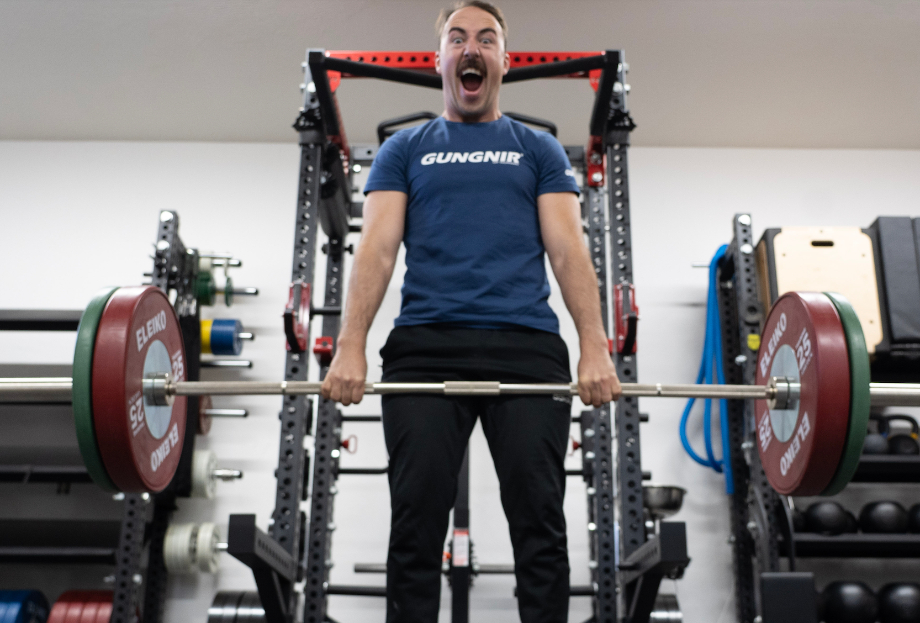We test and review fitness products based on an independent, multi-point methodology. If you use our links to purchase something, we may earn a commission. Read our disclosures.
Increase your deadlift with expert insights from certified personal trainers.
Deadlifts: Pick it up, put it back down. It sounds so simple, yet the deadlift is a maddeningly complex movement. The humble deadlift involves so much more than most people think, and that’s what brings us here today. Our guide on how to deadlift heavier is your one-stop-shop to earning that “nailed it!” feeling when you hit a new one-rep max.
How To Deadlift Heavier: Training Tips and Techniques
Ready to get stronger? Of course you are. Ahead, personal trainers share seven tips for increasing your deadlift, plus 10 deadlift accessory exercises, and at-the-bar tricks.
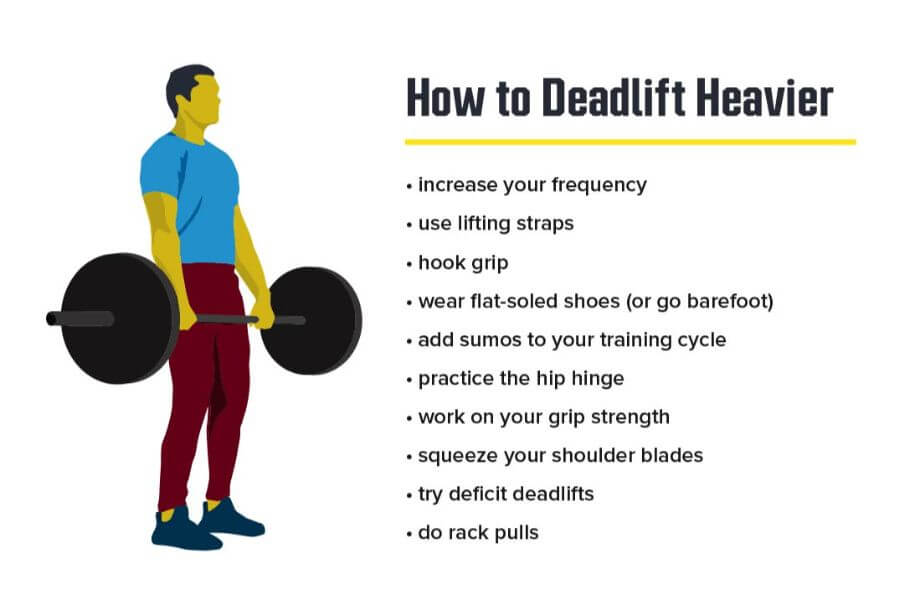
1. Periodization and Progressive Overload
It’s unlikely you’re going to increase your deadlift max without a proper training program. That’s where periodization and progressive overload come in. These two fitness concepts reign supreme when it comes to increasing your numbers on any lift.
Periodization refers to the systematic planning and manipulation of training variables such as volume, weight, rest periods, and frequency. Progressive overload refers to the consistent progression of these variables.
Nicole Davis, certified personal trainer and GGR editor, says her biggest tip for increasing your deadlift is ensuring you’re implementing progressive overload.
Related: Best personal training apps
But, she says, “That doesn’t always mean just adding weight. This could mean keeping the weight the same but adding a few reps to each set, playing around with drop sets, or playing around with pause and tempo. If you can’t seem to crack a specific load, consider some of these techniques to push past that halt in progress.”2.
2. Do Submaximal Training
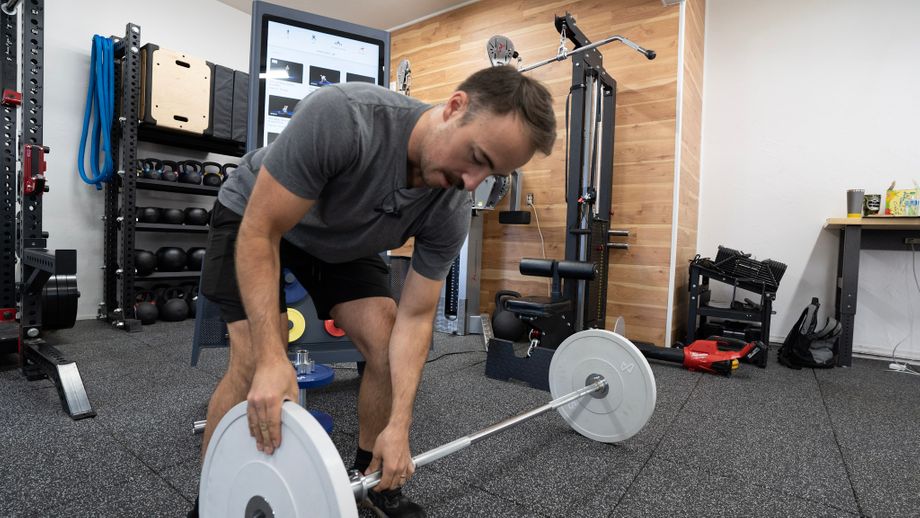
When you’re on a deadlift training plan, not every day should be a max-out day, regardless of rep count. So, no, you shouldn’t be hitting your one-rep max on Monday and your three-rep max on Wednesday and your five-rep max on Friday.
Give yourself a break—and a shot at long-term gains—by including submaximal training in your cycle. This can look like having one max-out day per week and having one or two higher-rep, lower-weight days in addition.
3. Increase Training Volume (Or Don’t)
Manipulating training volume is a surefire way to instigate changes in your performance. For example, people who ONLY deadlift heavy will benefit from using lighter weights for more sets with more repetitions every so often. And vice versa—if you’re always repping out sets of eight to 10 deadlifts, lower the reps and increase the weight.
Ultimately, how much volume you need to increase your deadlift is personal.
“On my deadlift cycles, I only deadlift once a week,” says Kate Meier, CrossFit-L1 coach and Olympic weightlifting athlete.
“Some people can handle more volume than that, but I also pull off the ground a lot in my other training (snatches and cleans),” she continues. “That’s all pulling volume that I take into consideration when looking at how often and how much I do traditional deadlifts.”
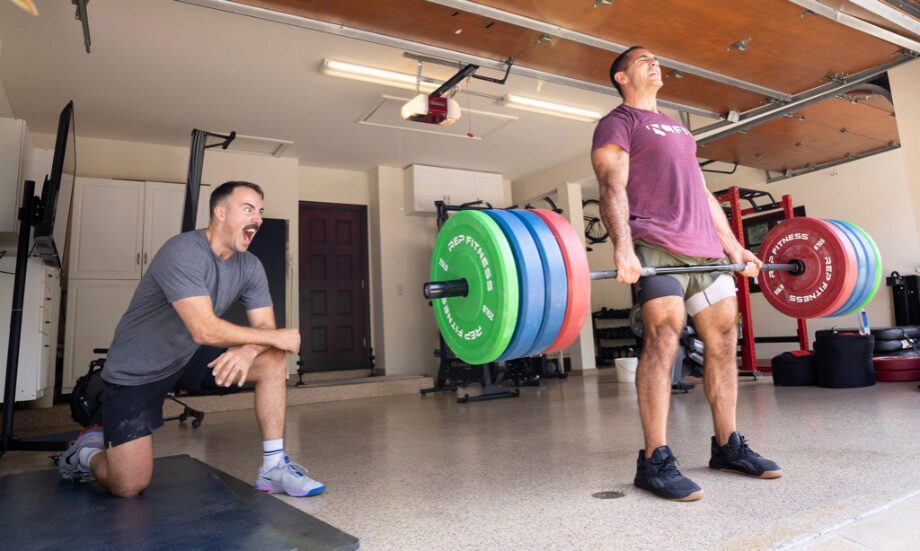
4. Do Other Compound Lifts
If you want to increase your deadlift, you may have a touch of tunnel vision and actually deadlift too much.
Make sure you continue to work other compound movements into your training plan, for both the lower body and upper body—because, contrary to popular belief, the deadlift is actually a full-body exercise, not just a lower-body or a back exercise.
Training compounds like squats, lunges, and power cleans can all transfer to your deadlift. (We cover the best deadlift accessory moves later in this guide.)
5. Train Your Grip
“Ultimately, there’s no ‘wrong’ grip for the deadlift,” says Anthony O’Reilly, certified personal trainer and GGR writer. “It should be noted, though, that most researchers agree that a supinated grip (both palms facing up) increases the risk of rupturing muscle tissue.”
“While not injury-proof (no move is),” he continues, “the hook grip has been shown to increase power and grip strength for lifters.”
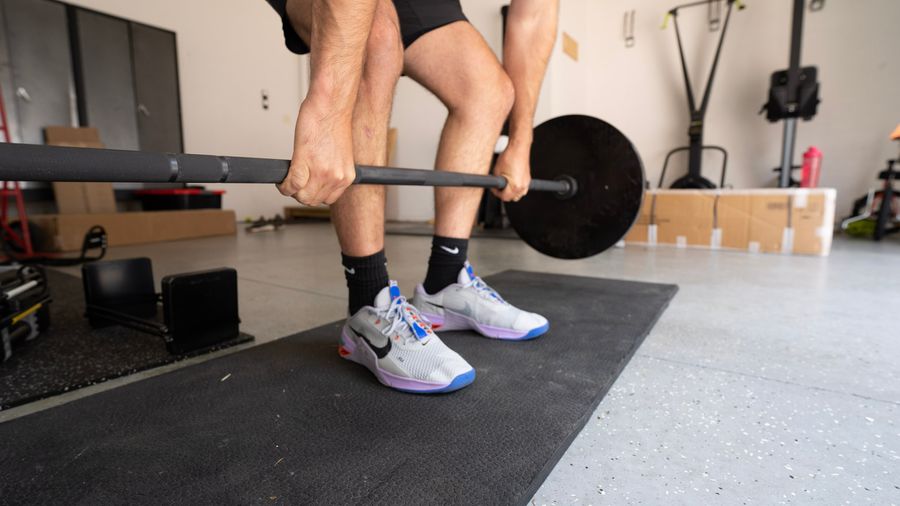
Hook grip involves wrapping your thumb around the bar, and using your other four fingers to encase it and the bar, Anthony explains. This gives an extra layer of friction to prevent the bar from slipping from your grip during the lift.
Aside from using hook grip, you can actually train your hands, wrists, and forearms to hold onto the bar longer no matter what style you prefer. Try grip exercises like dead hangs from a pull-up bar, farmer’s carries, reverse curls, chin-up or pull-up holds, wrist curls, and plate pinches.
For many people, their grip is what limits their deadlift numbers, so this is one area to work on if you find your forearms giving out when you try to go heavy.
6. Don’t Forget to Deload
As much as we’d love to go hard in the gym all of the time, as certified trainers and longtime fitness enthusiasts, we know it’s just not safe—or effective.
Take it from Kate: “Deadlifts are my absolute favorite lifts, but they tax the heck out of me. If you’re running a true deadlift cycle, it’s important to remember to take rest days and a deload week. I like to do three weeks of progressing with deadlifts and then a deload week where I cut the volume AND the weight.”
Deload periods and rest days are not only important for your physical performance, but also for your mood and morale toward training. If you beat your body up too much, eventually, your mind will catch up and you may struggle with physiological and psychological symptoms of overtraining.
7. Stick to Your Percentages
“People love to say things like, ‘My best deadlift is 425, but I want to deadlift 500 pounds, so I should take all my percentages off 500 pounds.’ No,” Kate says straightforwardly.
“The deadlift is a reflection of absolute strength, and day-to-day, your absolute strength fluctuates based on sleep, food, stress, and many other factors,” she explains. “So if you are doing your percentage work off numbers you haven’t even hit yet, you’re likely setting yourself up for frustration on days the bar feels heavy or you can’t even get it to budge.”
Good coaches prescribe percentage work for a reason: It’s effective.
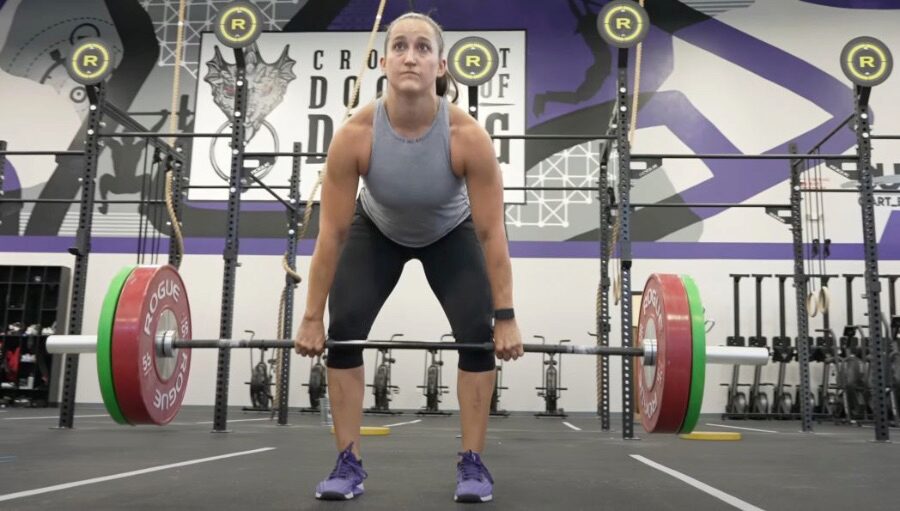
How to Train Different Deadlift Variations
If I had to guess, you have probably chosen one type of deadlift and stuck with that for the majority of your training, ‘cause you like that one better. Well, in this section, I’ll explain the benefits of different types of deadlifts.
RELATED: 13 Deadlift Benefits, According To An Olympian
Conventional Deadlift
The conventional deadlift is the “standard” deadlift where your stance is about shoulder-width apart, your hands grip the bar outside of your knees, and your feet point forward. In this type of deadlift, your hamstrings and lower back put in more work than they do in sumo (explained below).
Since your feet are closer together in the conventional stance, the pull distance is greater, meaning many people can’t lift as much in conventional as they can in sumo. This is why in powerlifting or strongman meets, you’ll see most athletes doing sumo variations.
Sumo Deadlift
“Listen, we’re not here to weigh in on whether sumo deadlifts are ‘cheating,’” Anthony says. “As we like to say, do what makes you comfortable. Some people find sumos more comfortable, and as a result can lift heavier weights.”
As you might guess, a sumo deadlift involves standing with a wider stance like a sumo wrestler at the start of a bout, he explains, as opposed to the shoulder-width stance of a conventional deadlift. The wider stance is going to place more emphasis on your glutes and quads, so if you want to build those muscles then it might be a good idea to test this out.
“Some lifters have also found it places less stress on their back, and prevents rounding at the lockout,” Anthony says.
Trap Bar Deadlift
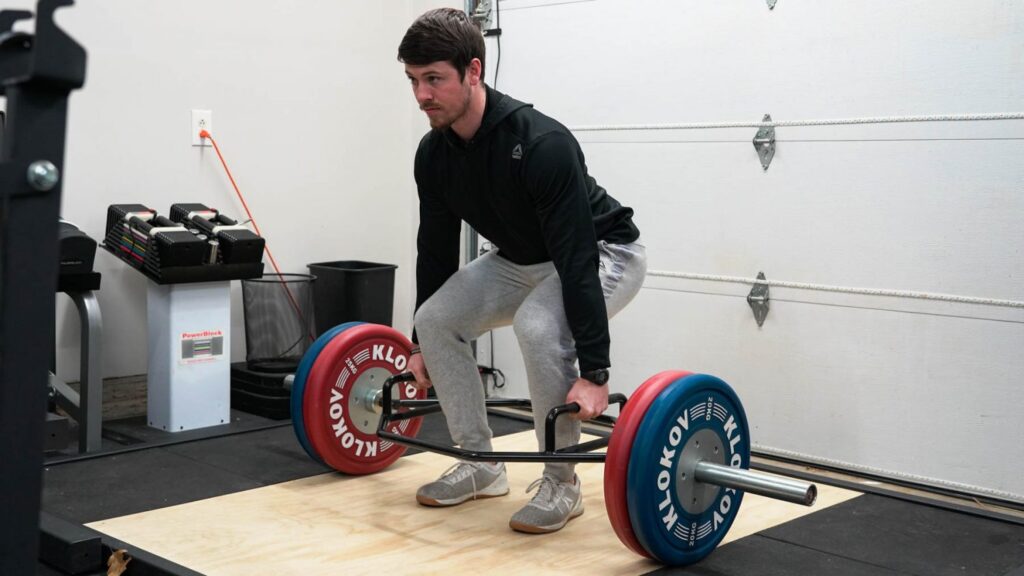
Using a trap bar is not cheating, either. Trap bars, sometimes called hex bars, center your body between the weight plates on the bar. This more evenly distributes mass, therefore making the deadlift movement pattern easier to accomplish for many people.
Using a trap bar can prevent quad-dominance in the deadlift, as well as prevent hyperextension in the lockout. Trap bars also slightly reduce the range of motion required for lockout, which makes this type of deadlift a good way to train hip extension with heavier weights—similar to rack pulls, detailed later.
Related: Best Trap Bars
How To Train Deadlift Accessory Work
To increase your deadlift, don’t just deadlift! If that sounds odd to you, let me introduce you to the concept of accessory work.
Accessory work is a broad term used to describe a selection of exercises adjacent to a goal, often an improvement in a compound lift. In the case of the mighty deadlift, accessory work includes exercises that target the posterior chain, which includes all of the muscles that run along the back side of your body.
To spell that out:
- Posterior deltoids (backs of your shoulders)
- Latissimus dorsi (lats)
- Rhomboids
- Gluteus maximus, medius, and minimus
- Biceps femoris and semitendinosus (hamstrings)
- Calves
- Erector spinae (deep spinal muscle)
- And other muscles that lie deep within your musculoskeletal system
“I love deadlift alternatives you can mix into other days of the week or into deload weeks, like barbell hip thrusts, Romanian deadlifts (RDLs), and single-leg RDLs,” says Kate. “Hip thrusts never feel quite as taxing, and once you nail the movement, you can usually do as much as or more than your deadlift max because it’s a shorter range of motion, but you’re still hammering your glutes, core and hamstrings.”
RELATED: Deadlift Muscles Worked
Ahead are some deadlift accessory exercises you can try to help increase your deadlift.
1. Single-Leg Deadlifts
Using dumbbells or kettlebells, you can improve your unilateral strength, balance, and core stability with single-leg deadlifts.
2. Romanian Deadlifts
This deadlift variation will hammer your hammies and increase your raw pulling strength. It also teaches proper hip hinging and hip extension.
3. Pause Deadlifts
If you’re having trouble getting the bar off the floor, Anthony recommends trying paused deadlifts.
“This is a move where you explode off the floor and hold the loaded barbell either at the mid-shin or right below the knee for a two count (don’t rush this hold) before moving onto the lockout,” he explains.
“This increases time under tension, especially on your quads, and can help you master proper form. Since you’ll be holding the bar for a longer period of time, it’s also good for increasing grip strength.”
You should do these with a lower weight to ensure good form.
4. Deficit Deadlifts
A move with similar benefits to the pause deadlift is the deficit deadlift. This variation involves standing on a thick 45-pound weight plate (or another slightly elevated surface) and then picking up the bar.
5. Deadlift Iso Holds
Another great way to build up your deadlift is with isometric holds, Anthony offers. To do this exercise, get two safety pins or heavy-duty spotter arms that can prevent a bar from moving up in a squat rack. Place the bar below the pins, and pull.
“Obviously, you won’t be able to get the bar past the pins but that’s kind of the point,” Anthony says. “Isometric holds like this can increase muscle and strength without using too much weight, thereby decreasing stress on your body. The pins can be placed at any part of the deadlift you like, but right around the knees is usually the best place.”
6. Rack Pulls
Perhaps the most popular deadlift accessory exercise—and a great exercise in its own right—is the rack pull. Rack pulls are typically performed in a squat rack, but can be done on power blocks or even two stacks of 45-pound weight plates. The point is to elevate the barbell from the ground, usually to your deadlift sticking point, and pull heavy weights from that position.
7. Hip Thrusts
The ultimate booty exercise is also a phenomenal deadlift accessory exercise. Hip thrusts involve placing a weighted barbell across your hip crease and using your glutes and hamstrings to thrust the barbell upward. This shortened range of motion has powerful positive effects on your ability to lock out at the top of a heavy deadlift. If you do these single-legged, doing them bodyweight-only is often enough to ignite a fire in the glutes and hammies.
8. Reverse Hypers
The reverse hyper machine allows you to train your posterior chain muscles at a lower intensity and in greater isolation than other deadlift accessory exercises. You can rep these out or do isometric holds.
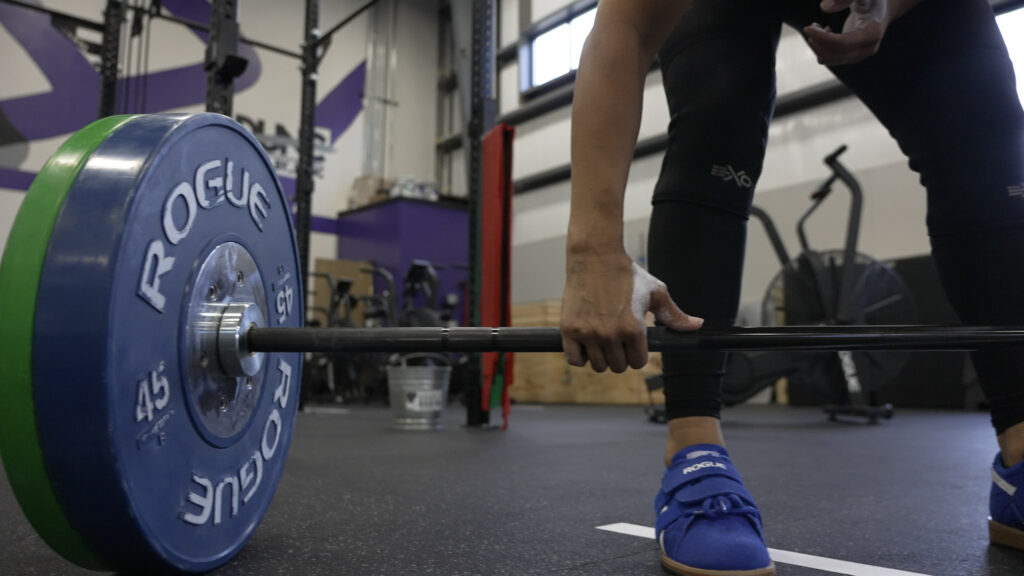
9. Bent-Over Rows
Don’t neglect your upper back. If you can’t squeeze your shoulder blades back when the deadlift bar feels heavy, your spine will begin to round and you may fail the lift or injure yourself. Bent-over rows train your upper back muscles and core stability in compromised positions, two things you need for a successful deadlift.
Related: Best Back Exercises
10. Pull-Ups
I can’t overstate the importance of strong lats for heavy deadlifts. Your latissimus dorsi (“pull-up muscles”) play a major role in your ability to surpass the sticking point and lock out at the top of a deadlift. Pull-ups and pull-up variations are arguably the best way to increase the strength and stamina of your lats.
Related: Best Pull-Up Bars
At the Bar: Day-Of Tricks to Deadlift Heavier
So you’ve done the training, and now it’s time to set a new personal record. Follow these tips to ensure you nail your heaviest deadlift yet!
- Warm up: This should go without saying, but don’t attempt to deadlift heavy without warming up your body. Deadlift warmups should include some sort of light movement to get the blood flowing, as well as priming of the deadlift primary movers and any mobility work you need to get into position.
- Nail the setup position: To increase your deadlift, you need proper deadlift technique. A big part of that is the starting position. In a good (conventional) deadlift setup, your feet are about shoulder-width apart, firmly pressed into the ground at midfoot; you exhibit a deep hip hinge with a neutral spine and tight core; and you’re looking at the bar or in front of it, not craning your neck.
- Use proper form: Don’t let your deadlift form deteriorate on the way up. Once you start pulling, keep your spine in its tight, neutral position to reduce your risk of injury. Keep the barbell close to your shins, lightly grazing them if you need to. Squeeze the hamstrings and glutes to press the hips forward and reach full hip extension—NOT hyperextension of the lower back. One cue I love is: “Hips to the wall in front of you.”
- Wear lifting straps: If your grip strength is limiting your ability to increase your deadlift, you could try using lifting straps. Powerlifting athletes often use straps to keep the bar firmly in their grip when deadlifting extremely heavy weights.
- Try hook grip: There are three ways to grip the barbell when deadlifting. You can try double-overhand grip (the hardest); mixed grip (one underhand, one overhand; probably the most popular), or hook grip (painful on the thumbs, but effective at keeping the bar in your hand). Hook grip takes some getting used to, but it’s worth it once you master it.
- Experiment with stance: There’s sumo and there’s conventional, and then there’s a lot of space in between. Don’t limit yourself to a narrow shoulder-width stance or an ultra-wide sumo stance. Everyone’s anatomy is different, and I encourage you to experiment with your stance to find a sweet spot.
- Go barefoot: Getting low to the ground and pressing into a flat surface (i.e. the floor) is one simple way to increase your deadlift. You may not even realize how much your cushioned running shoes affect your deadlift performance. Try out barefoot deadlifts, or snag a pair of minimalist shoes like the Xero 360s or just some Chuck Taylors. (We have the best deadlift shoes recommendations.)
- Don’t forget to fuel: Eat, eat, eat! If you’re going for a personal best, a high-volume day, or just a heavy set of five, you need to gas up before hitting the bar. A combination of quick-digesting carbs and protein will do you well about a half-hour before your attempt.
Increasing Your Deadlift FAQs
Here are some commonly asked questions about how to increase your deadlift:
How can I increase my deadlift?
You can increase your deadlift by following a deadlift training program that progressively overloads and includes prophylactic rest days and deloads. Manipulating your total weekly volume, practicing different deadlift variations, and adding in accessory exercises will also help you increase your deadlift.
Do deadlifts build muscle mass?
Deadlifts certainly do build muscle, specifically in the posterior chain (hamstrings, glutes, back, posterior deltoids). While deadlifts won’t result in the same hypertrophy—AKA muscle growth—as bodybuilding exercises like hamstring curls and hip thrusts, you will definitely notice changes to your backside after a proper deadlift cycle that progresses you to heavier weights.
What are the best exercises to increase deadlift?
Practicing different deadlift variations will help you increase your deadlift. But you can go even further by adding in deadlift accessory exercises to your strength training routine, such as single-leg Romanian deadlifts, hip thrusts, rack pulls, and reverse hypers.
How long does it take to increase deadlift?
I hate to be the bearer of bad news, but getting significantly stronger at any lift, including deadlifts, takes quite some time. A typical deadlift program will run four to 12 weeks. If you choose a program and stick to it, you should be lifting heavier in one to three months.
Do squats improve deadlift?
Getting better at squats can certainly help improve your deadlift. Heavy squats train many of the same muscle groups you use in the deadlift, including your glutes, hip abductors, erector spinae and quadratus lumborum (deep low back muscles), and abdominals. Since squats primarily train the quads, and deadlifts primarily train the posterior chain, you should include other exercises in your routine, too.
Can supplements help increase deadlift?
Sure, certain supplements may help you get stronger in all capacities if you’re dosing and timing correctly. For example, protein and creatine supplementation are both shown to contribute to increases in muscle mass and strength. However, supplements are finicky and not all supplements on the market are effective (or even safe). Plus, supplements alone—no matter how high-quality—won’t increase your deadlift. We recommend focusing on your training and using supplements as, well, a supplement to your training.
Do deadlifts cause back pain?
No, if performed correctly, deadlifts should not cause back pain. Your back muscles may get sore if you deadlift heavier or do more reps than usual, but you shouldn’t experience any pain other than that. If you experience back pain during or after deadlifts, consider working with a physical therapist or other qualified healthcare provider.
What muscles do deadlifts work?
Deadlifts work many muscles of the body, including: hamstrings, glutes, quadriceps, calves, lats, traps, erector spinae, and abdominals.
Further reading

In our Weslo Cadence 5.2 Treadmill review, we take a look at the specs of this now-discontinued treadmill. Read more

REP Fitness updated their functional trainer; how does it stack up? Find out in our REP FT-5000 Functional Trainer review. Read more

Increase your deadlift with expert insights from certified personal trainers. Deadlifts: Pick it up, put it back down. It sounds so simple, yet the deadlift is a maddeningly complex movement. The humble deadlift involves so much more than most people think, and that’s what brings us here today. Our guide on how to deadlift heavier is your one-stop-shop to earning that “nailed it!” feeling when you hit a new one-rep max. » Read more about: How To Deadlift Heavier: Expert Training Tips And Tricks to Help You PR » Read more

If you know someone on a weight loss journey, we handpicked the best gifts for weight loss that help support healthy habits. Read more

